Brought to you by Giulia Iattoni and Tales Yamamoto from UNITAR

WEEE (Waste from Electrical and Electronic Equipment) refers to all items of electrical and electronic equipment (EEE), and its parts, that have been discarded by its owner as waste without the intention of re-use.
(W)EEE Categories
EEE encompasses a wide range of products which, according to the categories set by the WEEE Directive, can be classified as:
- Temperature exchange equipment
- Screens, monitors (televisions, laptops)
- Lamps
- Large equipment (washing machines, large printing machines, and photovoltaic panels)
- Small equipment (vacuum cleaners, microwaves, ventilation equipment)
- Small IT and telecommunication equipment (mobile phones, Global Positioning Systems (GPS), personal computers).
Challenges and Opportunities
WEEE is equally classified as hazardous waste due to the presence of several toxic components, e.g. mercury, cadmium or lead and chemicals such as chlorofluorocarbons (CFCs), flame retardants or toxic additives. Despite legislation banning certain substances and promoting safer materials, older appliances containing these substances must be appropriately treated upon disposal to mitigate potential risks.
WEEE is not only challenging due to its hazardous nature, but also presents opportunities, containing many materials of value. Up to 60 elements from the periodic table can be found in complex electronics, ranging from precious metals including gold, silver, copper and platinum, to valuable bulky materials such as iron and aluminium, along with plastics that can be recycled. As Europe is gearing up to win the race for (critical) raw materials, WEEE management needs to become increasingly aligned with the resources extraction sector.
The total value of all raw materials embedded in the 62 Mt of WEEE generated worldwide in 2022 was estimated in the Global E-Waste Monitor 2024 to be around 91 billion US dollars. Out of this quantity, only 22.3% was documented to be collected and properly recycled worldwide.
The remaining 77.7% of the global WEEE flows are not documented, likely dumped, incinerated, traded illegally, or recycled with substandard treatments. Apart from the considerable loss in terms of recovery opportunity and associated costs due to these sub-optimal treatments, such undocumented routes also imply the release of mercury, brominated flame retardants and greenhouse gases into the environment.
The challenge with WEEE lies in harnessing its potential as an urban mine for secondary raw materials through circular economy models. However, only a small fraction is currently being extracted, resulting in a significant loss of valuable materials and financial resources.
Looking Ahead
Looking ahead, managing WEEE will become increasingly important as resource scarcity grows. Embracing sustainable practices and investing in innovative recycling technologies will be key to maximising the potential of electronic waste as a valuable resource. Circular economy principles offer opportunities to unlock the value of WEEE by promoting resource recovery and reuse. Recovering materials like precious metals, rare earth elements, and scarce metals from electronic waste can mitigate resource scarcity and environmental impact.
